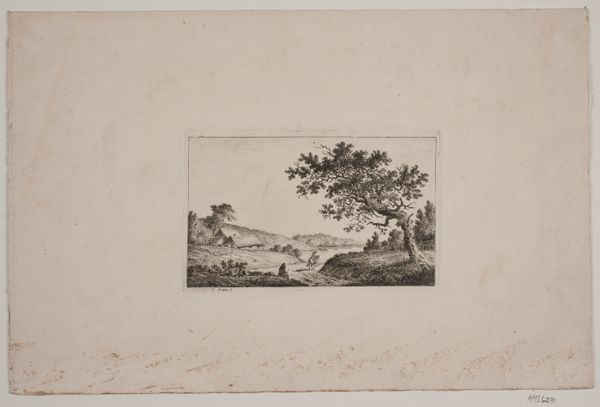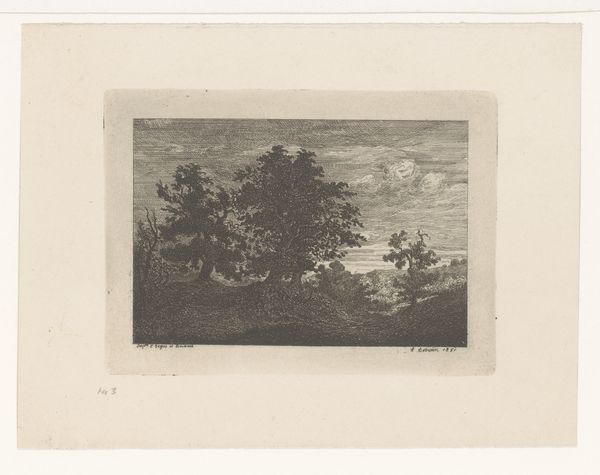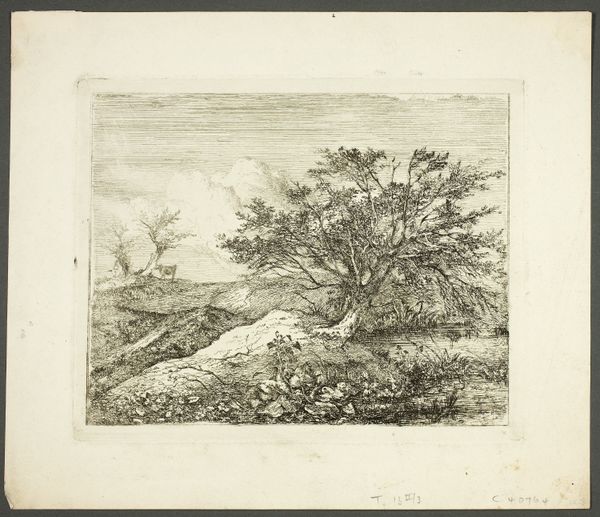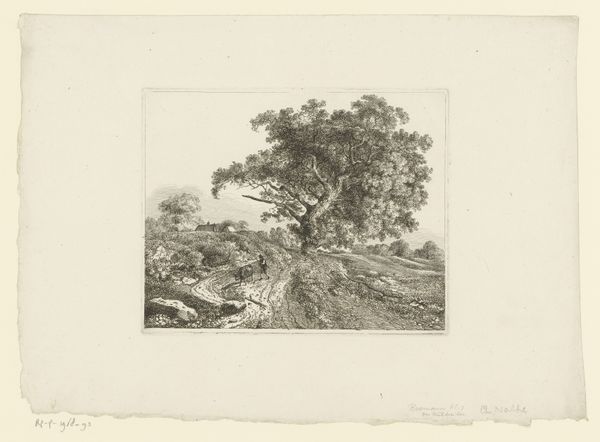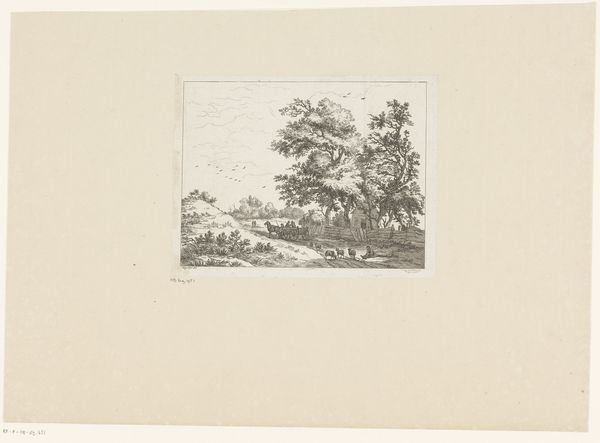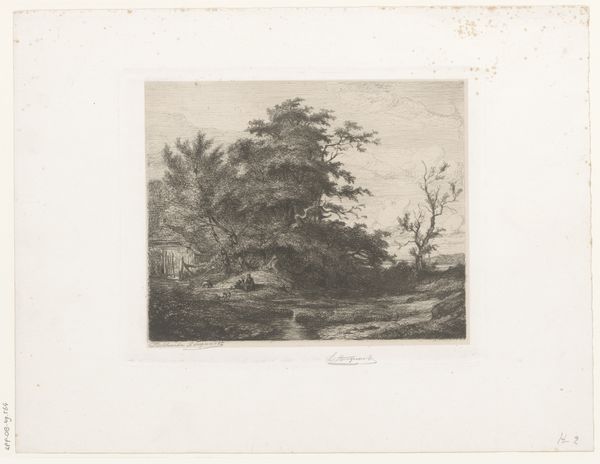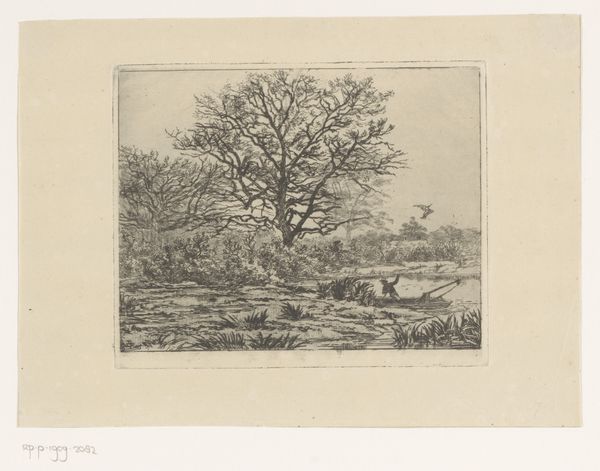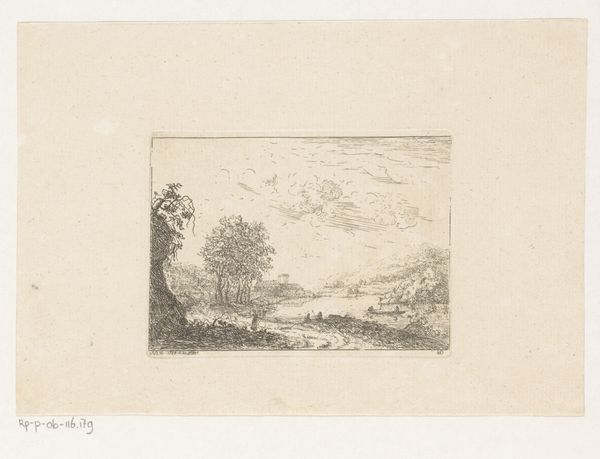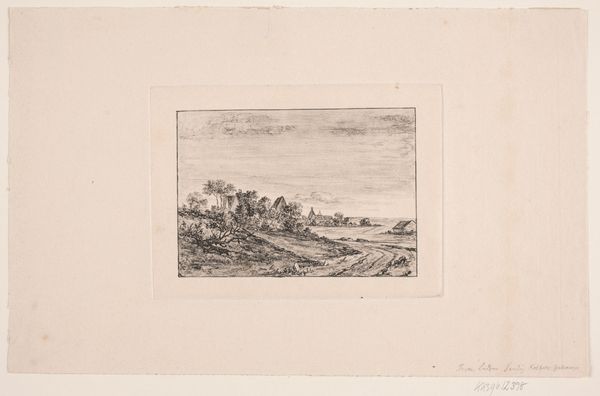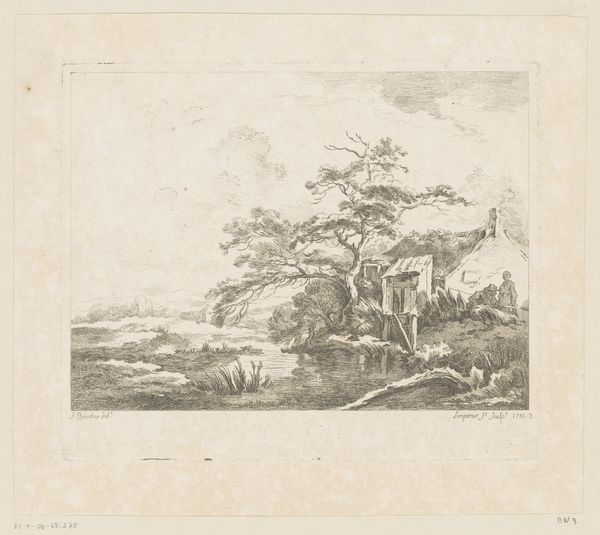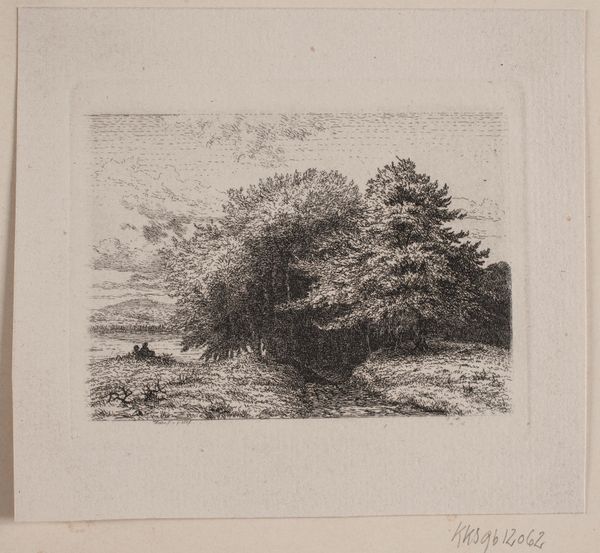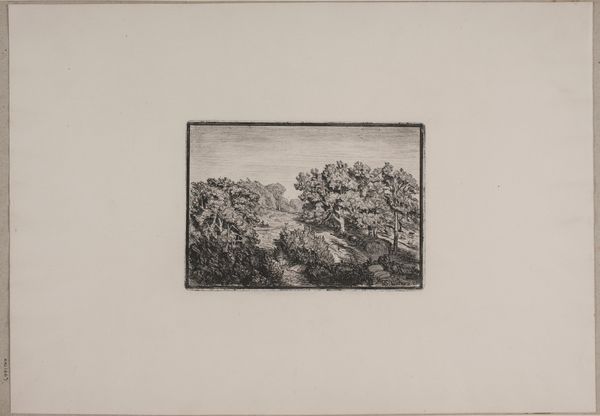
drawing, print, etching, engraving
#
pencil drawn
#
drawing
#
aged paper
#
light pencil work
# print
#
etching
#
pencil sketch
#
landscape
#
river
#
pencil work
#
engraving
Dimensions: height 111 mm, width 147 mm
Copyright: Rijks Museum: Open Domain
Curator: Let's consider this delicate engraving, "Landschap met eiken," or "Landscape with Oaks," created around 1848 by Martinus Antonius Kuytenbrouwer Jr. It's currently held in the Rijksmuseum. Editor: Immediately, I’m struck by how this miniature landscape evokes such a strong sense of stillness, a quiet observation of nature. There’s an almost melancholic beauty in the etching. Curator: Indeed. Kuytenbrouwer, working in the mid-19th century, would have been very aware of the artistic conventions of his time, especially landscape art as it related to notions of national identity and Romanticism. Consider how the imposing oak trees stand. In the Netherlands they're deeply linked to heritage, and national character. The way that nature and nationalism are presented, even on this intimate scale is very potent for this period. Editor: That reading definitely resonates when looking closer. Those sturdy oaks really do seem to embody resilience and deep roots. The tiny figures near the water’s edge emphasize a sense of human connection to the landscape, and their diminutive stature emphasizes a sort of power dynamic that highlights the natural world. Curator: Exactly. These sorts of depictions offered ways to imagine how the country sees itself, as rooted and powerful and a world in which there are citizens with their own distinct connection to that space. Even something seemingly benign can echo sentiments that serve the political and cultural status quo. Editor: Absolutely, the cultural role art takes on to help define national values. Now that you mention the figures again, there's definitely the possibility to consider their representation beyond the aesthetic or even their national symbolic one, to acknowledge they probably existed with diverse personal social and economic realities completely overlooked by a master narrative imposed here onto them. The image almost becomes a framework for acknowledging silences, for considering those whose existences might be invisibilized within dominant narratives. Curator: And the print medium itself democratizes access to this type of imagery, reinforcing these messages throughout society, though with its own socio-economic caveats to dissemination of course. A landscape that's now part of an expanded, inclusive understanding of cultural and societal contexts. Editor: That's right; reflecting on this art alongside broader societal challenges hopefully makes art historical practices feel connected and urgent. Curator: Absolutely, and on that note I think we're both off to work for that kind of practice today!
Comments
No comments
Be the first to comment and join the conversation on the ultimate creative platform.
